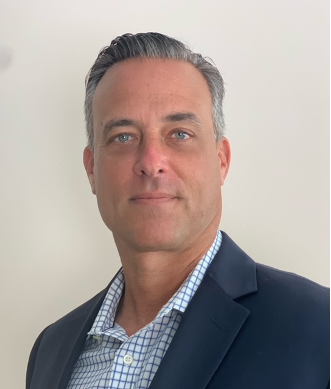Future Growth Relies on Channel Partners

Leading companies worldwide have chosen Akamai to build, deliver, and secure their digital experiences — making life better for billions of people, billions of times a day. Today’s sales landscape, however, has changed from making simple single transactions to building deeper relationships with trusted service providers.
This new environment means that channel sales leaders who understand the regional markets and have strong connections with their partners are vital to the continued growth of the company. In this post, Akamai’s channel sales leadership team reviews the challenges and the opportunities of shifting to a channel-first model.
Customers need more
The business-to-business sales relationship is undergoing a massive upheaval, as today’s customers are not as interested in making a single purchase as they are in forging lasting relationships with their vendors. Moving product is fine, but bundled solutions are winning the day.
Customers rely on providers like Akamai to reliably build, deliver, and secure their digital experiences. But what if they need more? What if they need customization? What if they need a solution bundled with other services that are outside of the vendor’s scope? With a business climate that’s increasingly complex, channel partners are integral to any plans for future growth.
The evolving role of channel sales
Customers aren’t the only ones pursuing lasting relationships. Vendors like Akamai are making dramatic improvements to refine, simplify, and strengthen their relationship with channel partners.
Regional Vice President Hans Nipshagen describes the old and outdated way of thinking about the channel this way: ”You know, they used to say that the people in the channel are the ones that are drinking coffee, maintaining a relationship, [but] not having a business view. That's a misconception. In today's world, where IT becomes more and more complicated, and it becomes a more important feature of doing business, it's actually the opposite.”
Noting that vendor-partner agreements are becoming more collaborative, Hans adds, “How can we grow together with our partners? Where's the opportunity? What activities do we need to plan?”
Partnerships yield rewards
Vendors like Akamai have moved away from a top-down relationship, and have worked to simplify their products and the terms of their partner agreements so that everybody is happily on the same page. Partners are now able to collaborate and provide input on products to create the right solutions for customers. Bringing partners in on the product development process yields another reward as well — it builds a sense of ownership and trust.
The back-and-forth dialogue between Akamai and channel partners is so important that Regional Vice President Tatsuya Suzuki formed a Partner Advisory Board to receive input.
He explains, “We launched a Partner Advisory Board that gathered the key partners as advisors. We received feedback, [which] helped to make more partner-friendly products. Transparency is the cornerstone of developing the channel-friendly culture. It is super important."
A channel-first approach
In practice, collaboration takes on a more thoughtful tone. Senior Director Dalton Hayakawa describes it this way: “We are trying to streamline some commercial actions for partners in order for them to know, hey, what should I focus on? What should I do in order to be productive? So we say, ‘Instead of you studying the portfolio of all 50 products we have, let's study your customer base and which strengths you have, and then select which offer we are going to start with.’”
“Akamai is committed to partner business — this is coming from the CEO level,” Tatsuya Suzuki explains, “We walk the walk and hope we achieve our goal to become truly partner-driven.”
Simplifying the partner experience
Because customers can do the research and compare products themselves, they often know what they want before the next sales call. Channel partners already differentiate themselves by offering additional value with services or bundled products, but they also hold the role of a trusted advisor.
Vice President Dave Allenexplains, “Especially in the economic times that we're in, everybody's cutting costs and customers are consolidating vendors. Even more so than a couple years ago, customers are relying on partners to tell them which vendors have the strongest portfolio and which vendors have the right vision and strategy.”
Better relationships, better results
Hans Nipshagen adds that consistency in message and mission is vital, “We need to make sure that we overcommunicate, that our plans have direction. We are going with the new products and services we are introducing, but we also need to know if a partner is changing their strategy. You need to have constant communication to be fully in sync with each other.”
Dave Allen sums it up: "We have to remember that Akamai is not the only vendor that they work with, that these regional offices, and the sales and technical sales and marketing teams, have relationships with a lot of different vendors. Once we've established a good relationship together — and the simpler we can make it, the more pointed, the more concentrated—the better the results."
Using data to tell the story
Data takes on much more importance as companies are scrutinizing budgets and looking for cuts in already razor-thin margins. In this environment, service providers turn their focus to delivering the right mix of products at the right time for the right price.
Dave Allen suggests that providers must also deliver the right marketing budget and the right level of vendor support for the channel. “It's the data that’s really going to tell the story on whether we're accomplishing the things that we set out to do together,” Dave says. “And I think it's critical to hold each other responsible for that, holding up each end of the bargain. Do we have the right level of investments in the areas that are critical, and is the partner doing the same?”
“Leveraging the data effectively helps Akamai's channel team provide transparent information to partners,” adds Tatsuya Suzuki. “We can say that these activities worked very well, but these activities didn't work, and here is our suggestion to get better results. This is a very healthy debate and transparency really helps us to succeed.”
Next steps
To understand the direction business-to-business sales will take in the future, Dalton Hayakawa says it’s helpful to see what’s happening in Latin America now. “We brought 87% [of new revenues from new customers] through partners last year and 74% the prior year. So partners are really important.”
Data-driven collaboration among suppliers and their channel partners is only the first step. Being nimble enough to adapt the product portfolio to changing needs is the next step. It’s not enough to be a current leader in the market. Lasting business success is generated by building enduring relationships based on transparency and trust.







